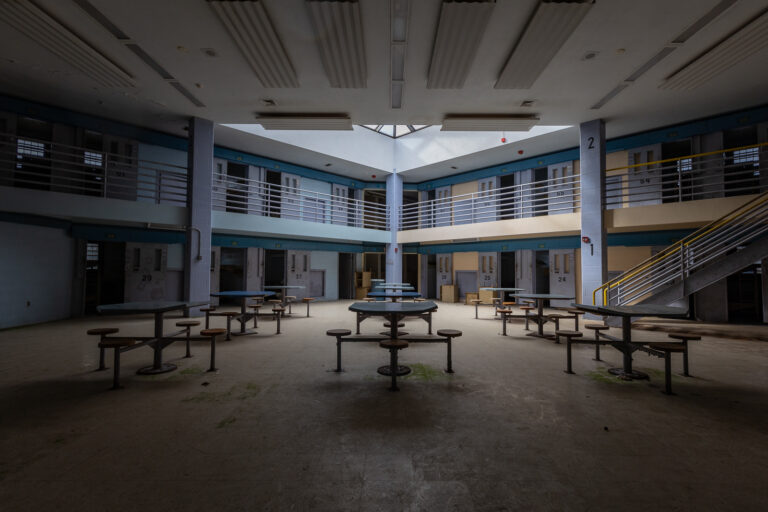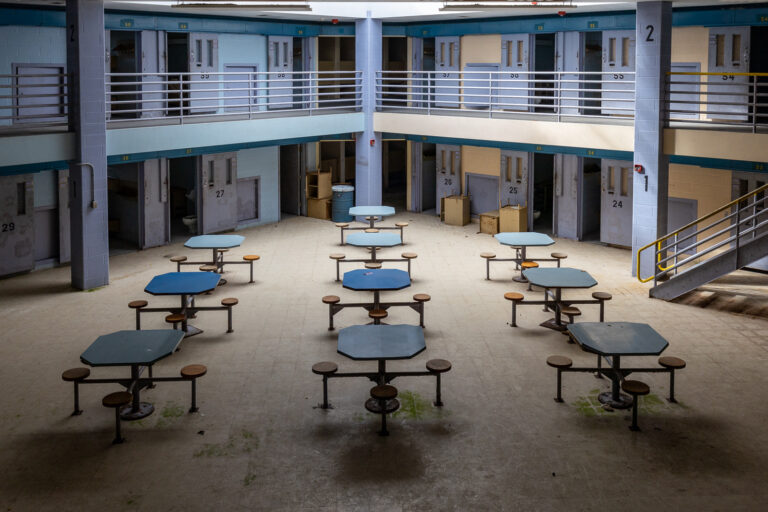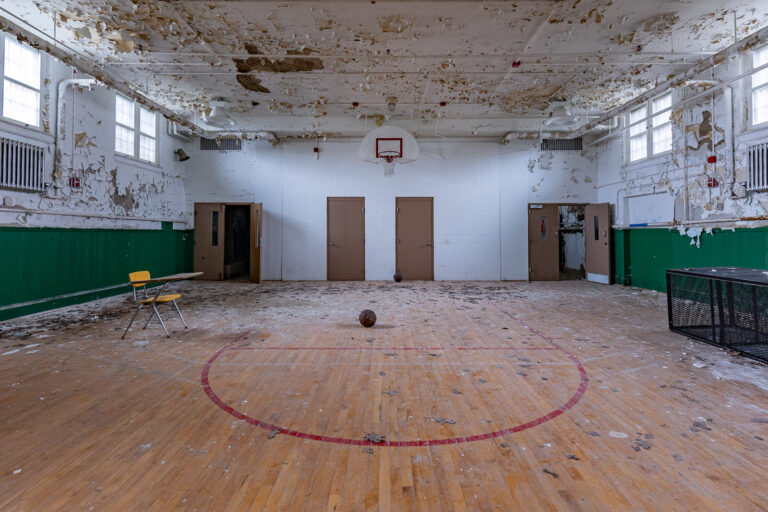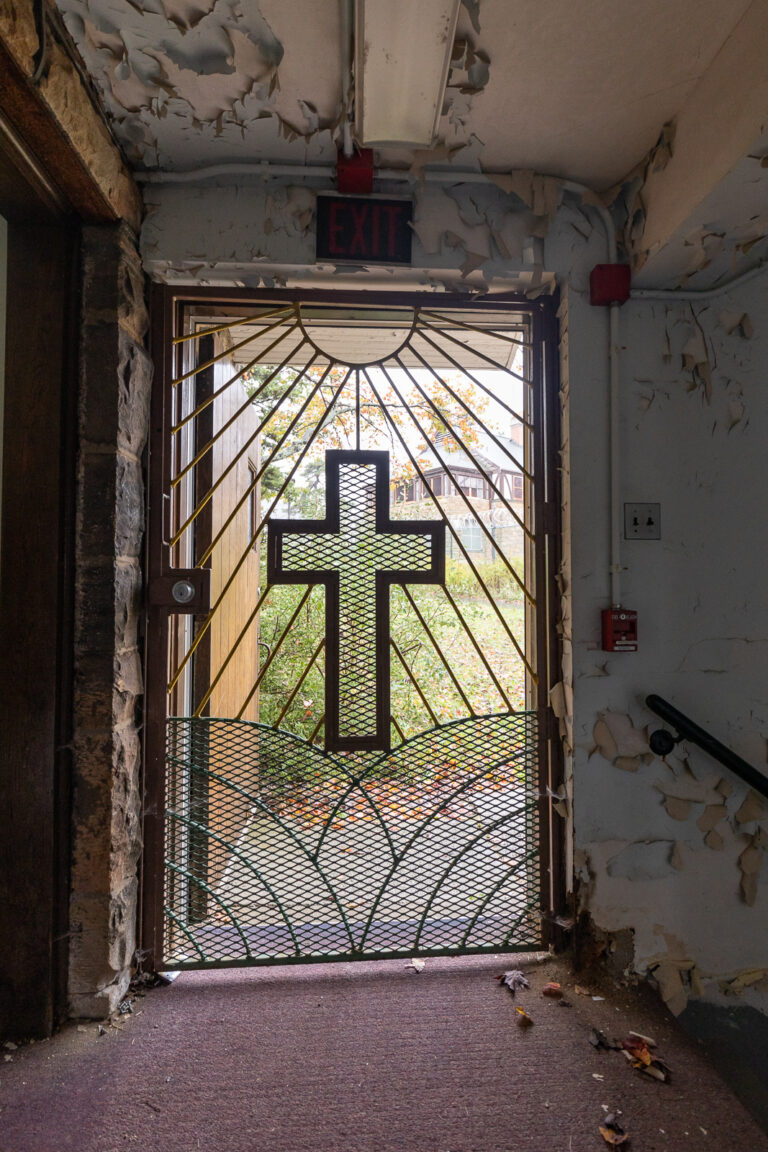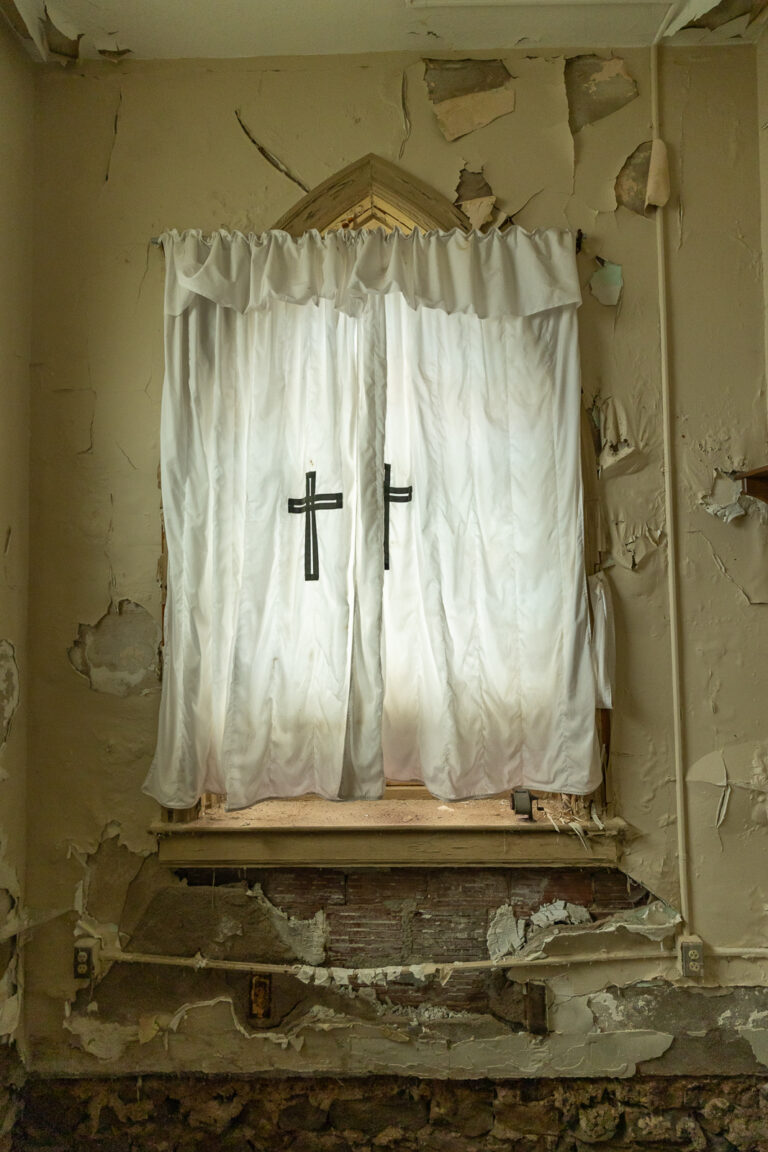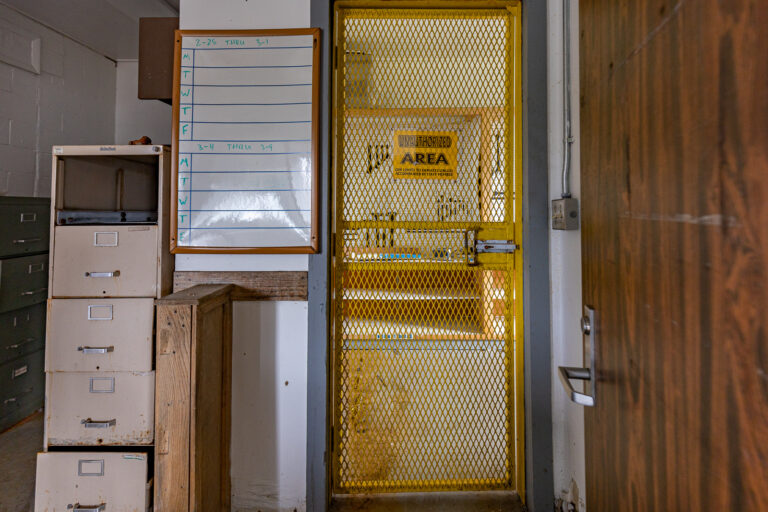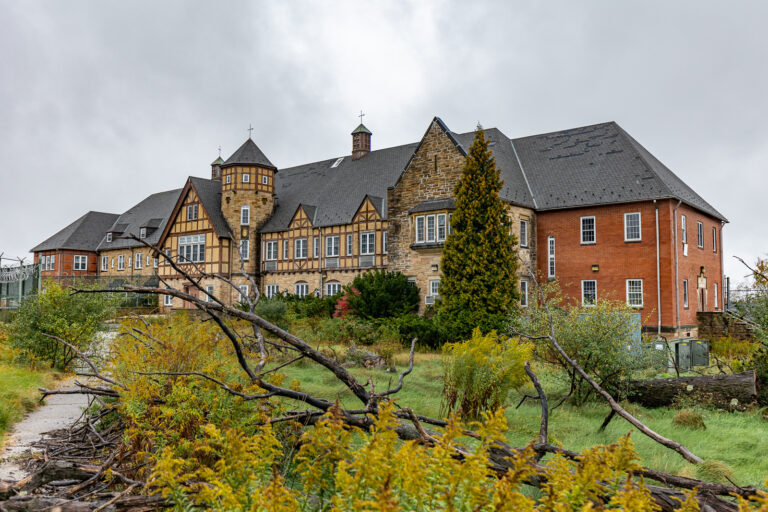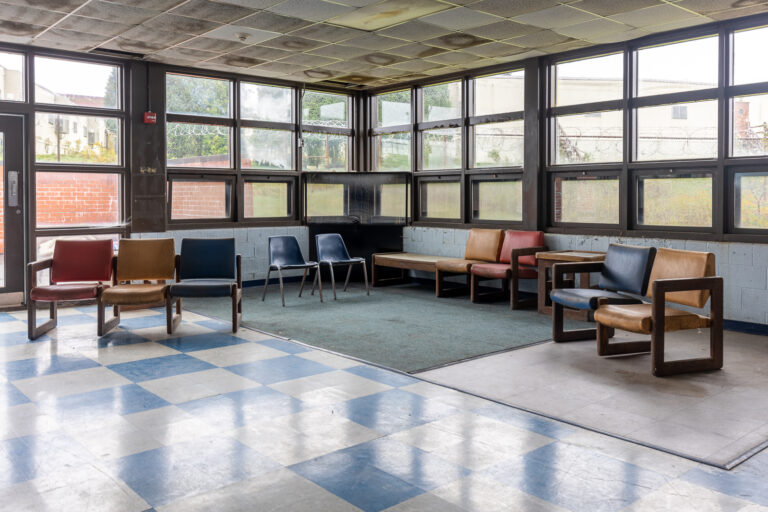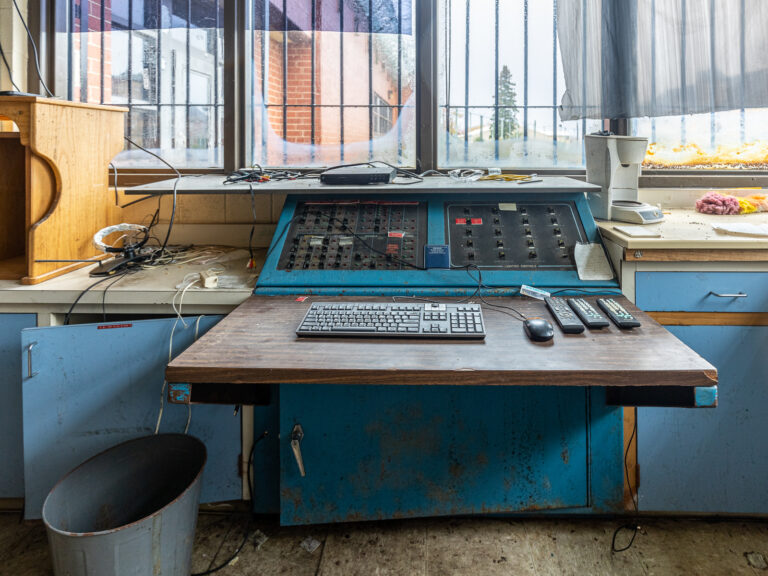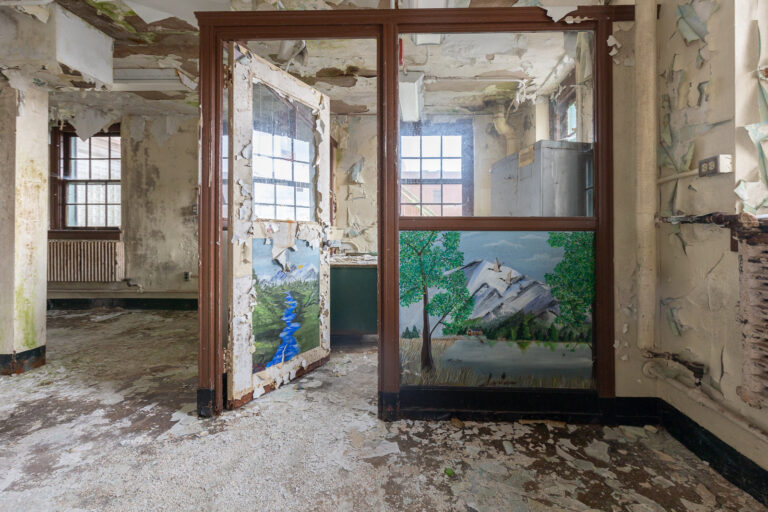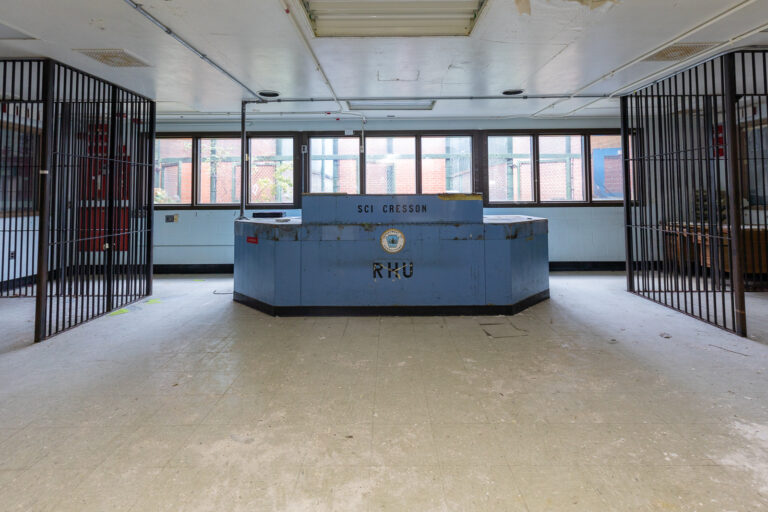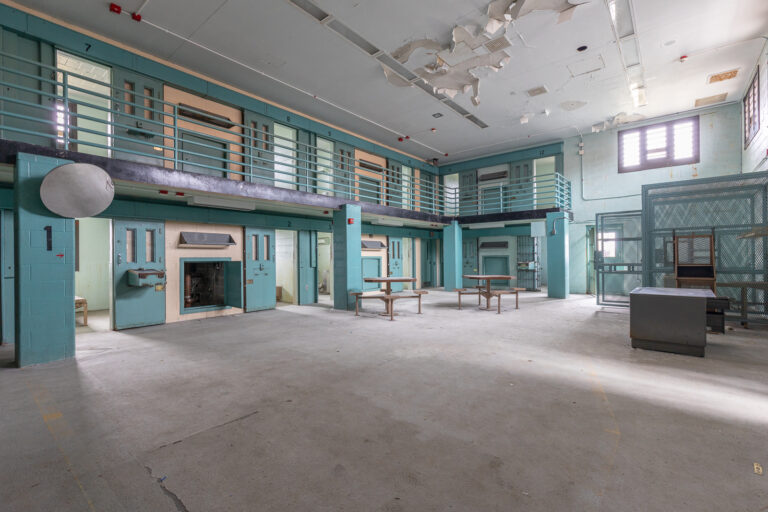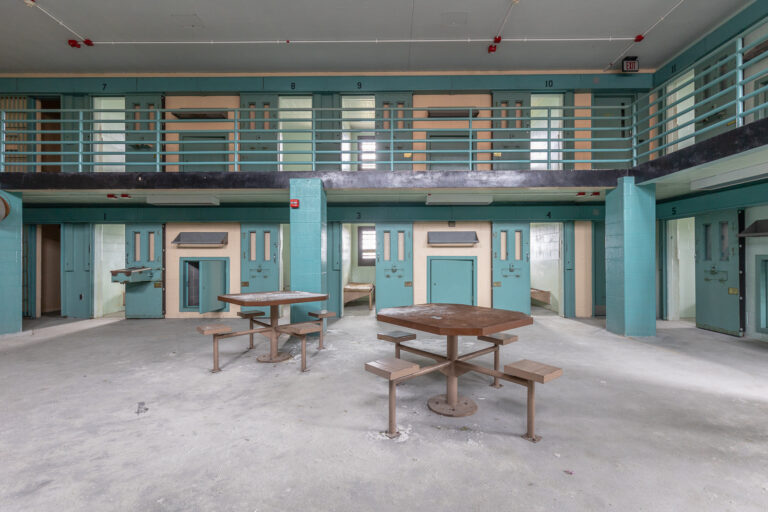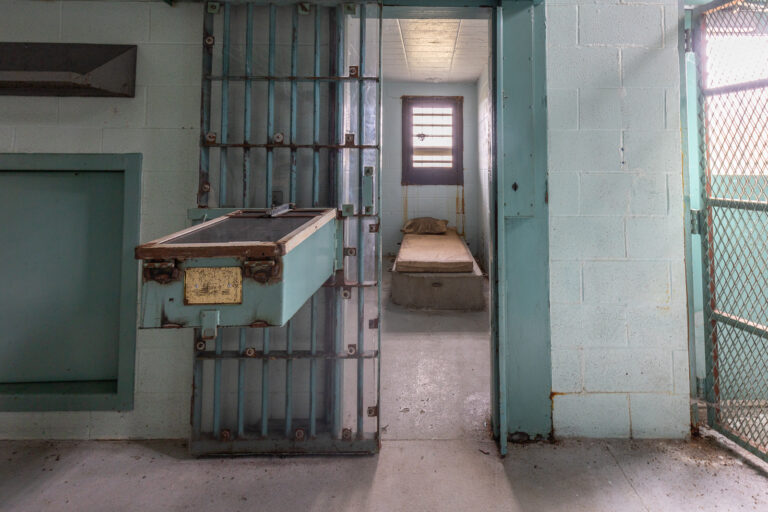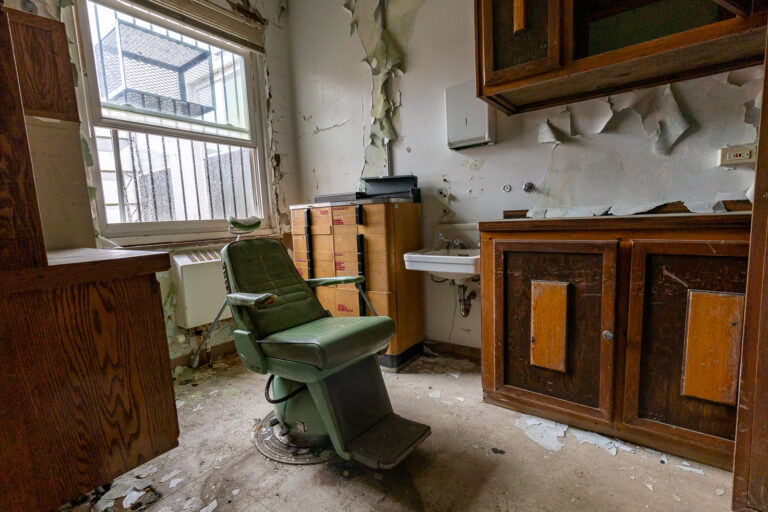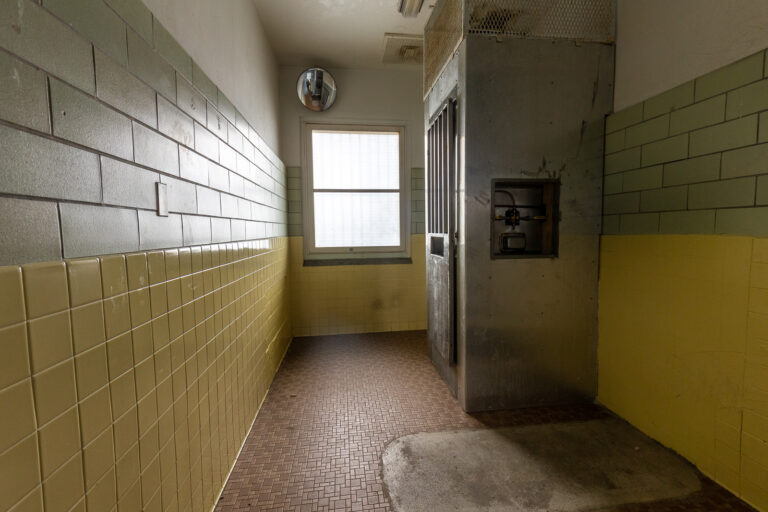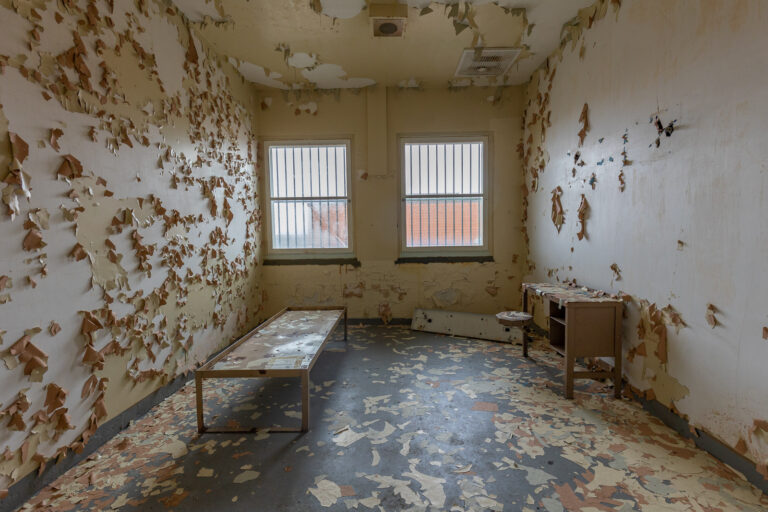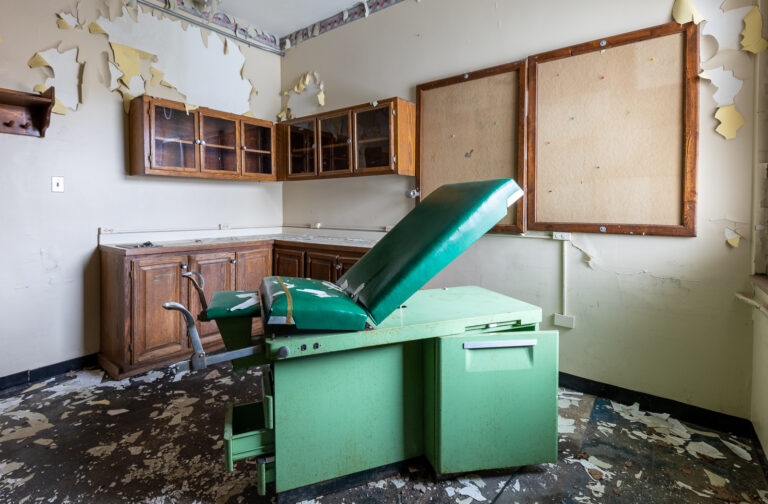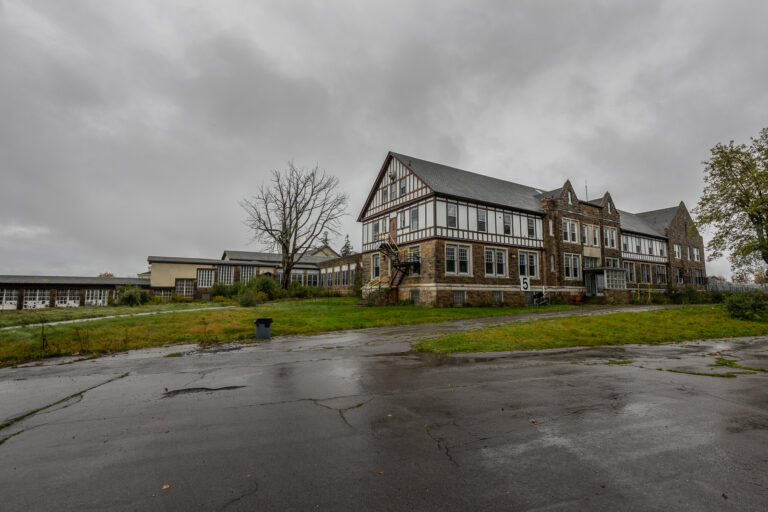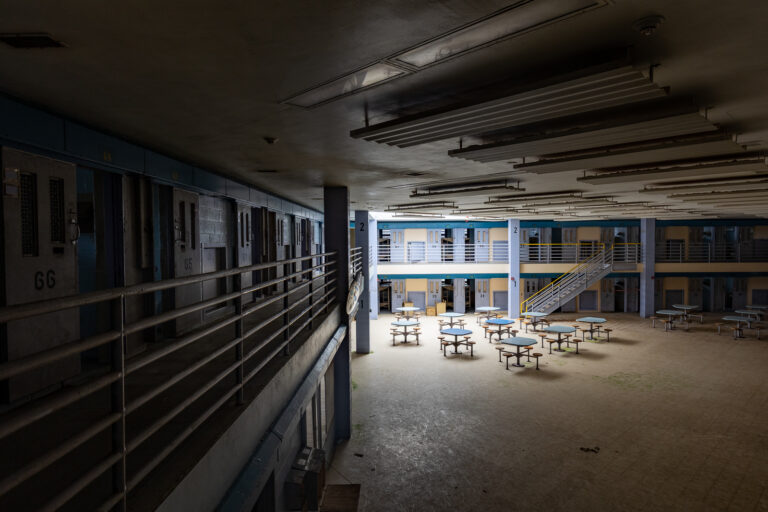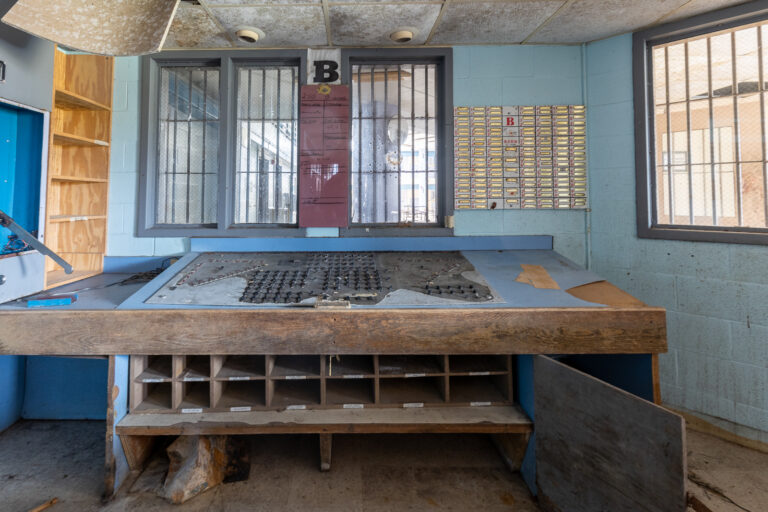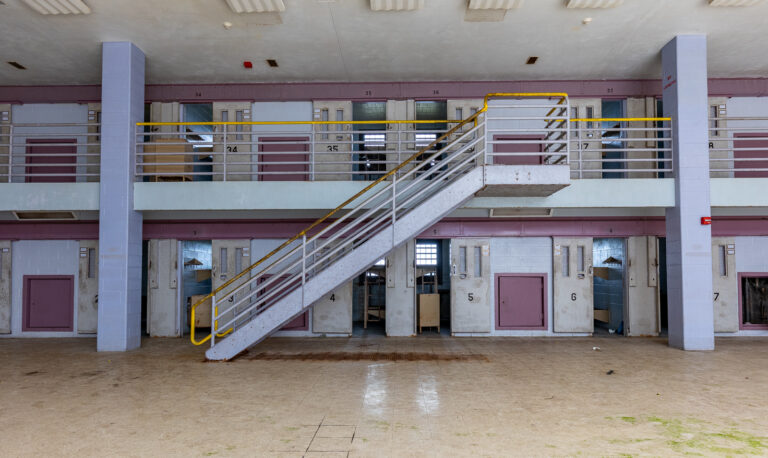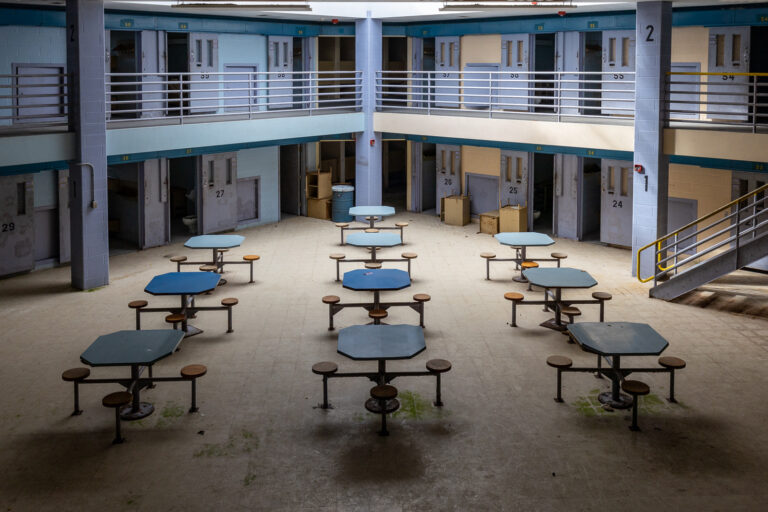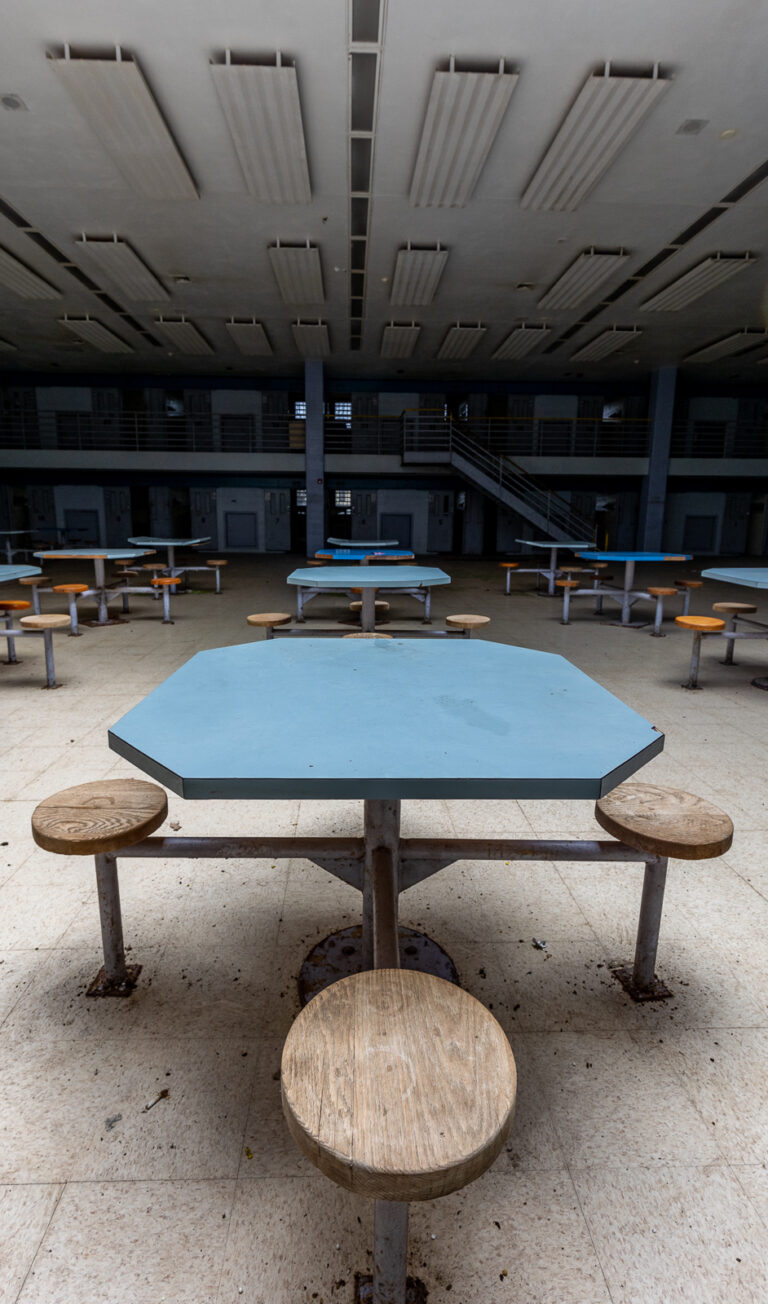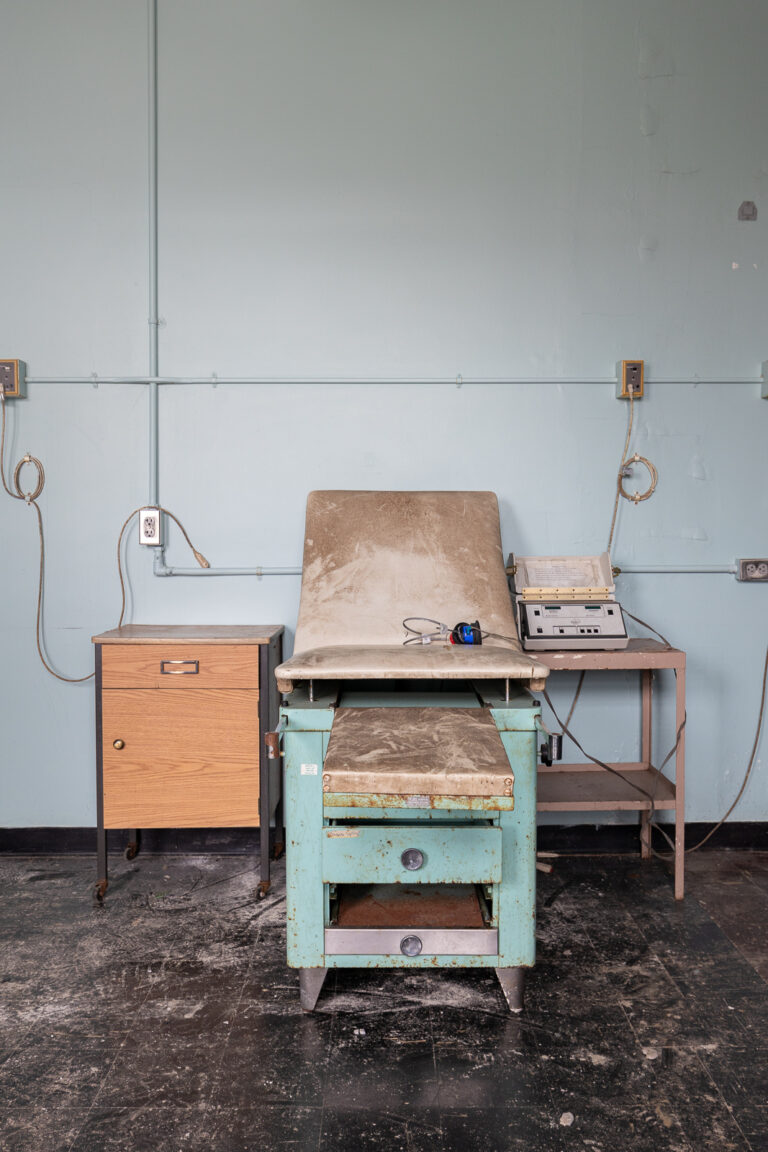History of the Cresson State Correctional Institution

The history of the Cresson State Correctional Institution begins about 100 years ago, and not as a prison. Originally named the Cresson Tuberculosis Sanatorium, it treated patients for tuberculosis, and it was believed the fresh mountain air was good for treatment. Construction on the new hospital started in 1012, and it operated until 1964. The land on which it sat was donated by steel tycoon Andrew Carnegie (you can read more about some of his history on the Carrie Blast Furnaces post). The administration building was built in the European style architecture with gargoyles on the tower and the crests of Scottish clans cut into the sandstone as a reminder of Mr. Carnegie’s heritage.
With the introduction of new drugs and treatments for tuberculosis, the need for sanatoriums declined. In December 1956, the facility was incorporated into the Lawrence F. Flick State Hospital to treat the mentally retarded. The facility remained in operation until December 1982 (Wiki).
Creation of Cresson State Correctional Institution
In 1983, the former hospital was transferred to the Department of Corrections for it’s current use as a prison. The cost to renovate/update it into a prison was priced around $20 million. Construction began in 1984, and it officially opened in 1987 as a medium security correctional facility for men. The new housing units at Cresson State Correctional Institution were prototypes for future institutions across the state of Pennsylvania.
Famous Inmates
Some of the more famous inmates housed at the Cresson State Correctional Institution included Joseph Kallinger, an American serial killer who murdered three people, and tortured four families. He committed the later crimes against the family with Michael, his 12-year-old son.
John du Pont an heir to the Du Pont family fortune was also an inmate there. He was convicted of murder in the third degree for the 1996, shooting of Dave Schultz, an Olympic champion freestyle wrestler living and working on du Pont’s estate. He was ruled to have been mentally ill but not insane and was sentenced to prison for 13 to 30 years. He died in prison in 2010. To date, he is the only member of the Forbes 400 richest Americans to be convicted of murder. In 2016, Netflix produced a documentary on Du Pont and the wrestling training farm he ran, titled “Foxcatcher.“
SCI Cresson Today
SCI Cresson closed on June 30, 2013, with the State of Pennsylvania citing the antiquity of the prison and rising costs of maintaining it as the primary reasons for the closure. Since then, the prison has sat mostly abandoned until recent. In recent years, Big House Produce has begun converting the abandoned prison site into a hydroponic farm for a variety of crops, including hemp. They found that the old abandoned prison buildings are well sealed, and easy to control the temperature, making them ideal for growth. Big House Produce has also opened the abandoned prison to tours for anyone interested in photography, or the history of the site to explore the old prison. For more information, please visit www.BigHouseProduce.com.

